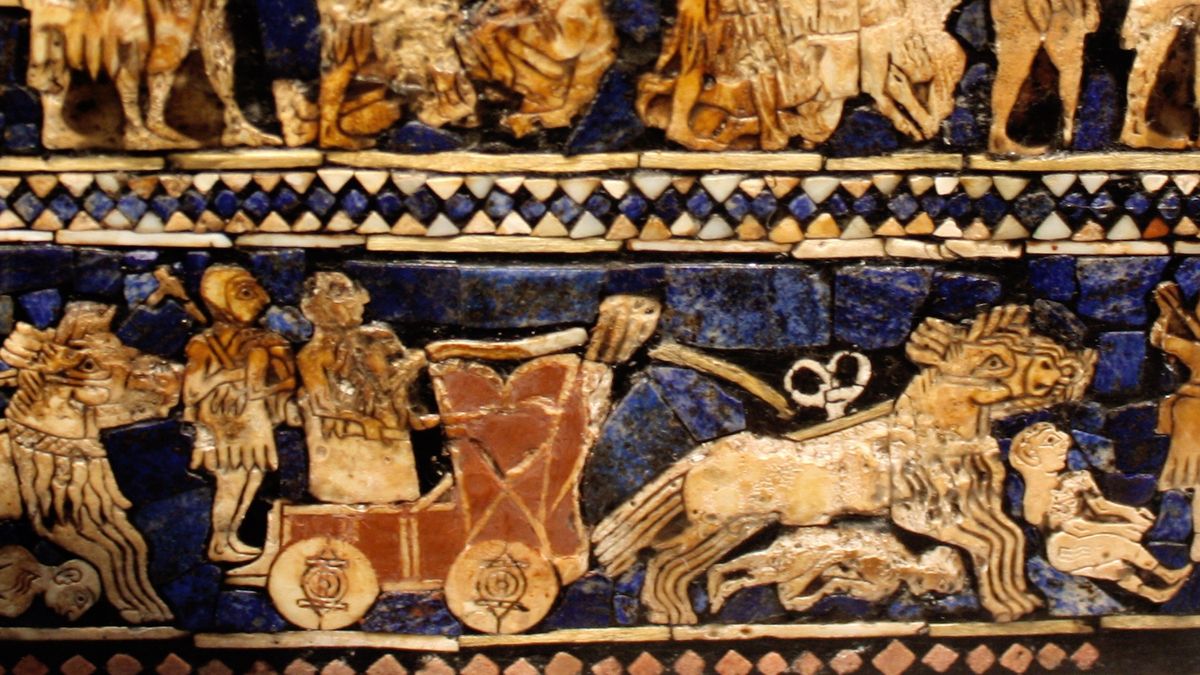Although the invention of the wheel some 6,000 years ago revolutionized everything from transportation to pottery making, its exact origins are still a mystery to archaeologists. But a new study using techniques from structural mechanics suggests that Eastern European copper miners may have been the driving force behind three major innovations in wheel technology as early as 3900 BC.
Archaeological evidence of wheels and wheeled vehicles is abundant in the Copper Age (c. 5000 to 3000 BC) across Europe, Asia and North Africa, including battle scenes painted on walls, miniature wheels, children’s toys, wagon burials and even early textual references to the technology. . Because the wheel was approved so quicklyhowever, it is unclear exactly where and when it was first invented—or whether it was invented independently at different times and places.
There are three main theories about the origin of the wheel. One suggests that it first appeared in Mesopotamia around 4000 BC and then spread to Europe. Another theory suggests that it developed around the Pontic coast of northern Turkey around 3800 BC The third main theory argues that the wheel was invented in the Carpathian Mountains between 4000 and 3500 BC and spread in different directions from there.
This third theory, presented in 2016 by the historian Richard Bullieta professor emeritus at Columbia University and a co-author of the new study, supports the idea that, around 4000 BC, the much-sought-after copper ore had become harder to find, requiring miners to travel deep into mines and nail containers. of ore back. Late Copper Age wagon designs that have been found in the Carpathian region are rectangular with trapezoidal sides — similar to mining cars today, Bulliet wrote in the book “The Wheel: Inventions and Reinventions” (Columbia University Press, 2016).
In a study published Wednesday (October 23) in the journal Royal Society Open ScienceBullies and co-authors Kai Jamesan aerospace engineer at Georgia Tech, and Lee Alacoquean engineer formerly at the University of Illinois Urbana-Champaign, detailed their model of how the wheel is likely to evolve.
Related: 20 inventions that changed the world
Starting with their knowledge of ancient wheel systems based on archaeological evidence, the team used computational mechanics and design science to investigate how humans might have turned a set of simple pulleys into a wheel and axle system.
In their study, the researchers suggested that three innovations were needed for the wheel to evolve. Given the need to move a heavy basket or box, people likely used rollers set along a path, moving the rear rollers forward as needed.

The first innovation – grooved rollers – would have allowed the box to rest on rollers and move back and forth without people having to walk around it to replace the rollers. This may have allowed people to push a wider cart into the mine. The second innovation was a set of wheels, or wheels fixed to an axle, which could have given the cart more room to pass over rocks and other debris in a mine shaft. And the third innovation, where the wheels move independently of the axle, likely arose about 500 years after the wheel set and added maneuverability to the design, according to the paper.
After generating an optimized model of the wheelset, the team found, based on their computational analysis, that the evolution of the wheel and axle from simple pulleys was a plausible descent path that reflected an increasingly energy-efficient design. But Carpathian mining may also have influenced the design.
“The environment in which the original wheel developers were operating contained several unique features that encouraged a shift toward roller-based transportation,” James told Live Science in an email. “Essentially, these environmental characteristics—eg, a narrow, closed path—led the wheel’s developers to that particular design.”
However, researchers noted that the wheel did not stop developing in the Copper Age. For example, the invention of radial ball bearings in 1869 led to significant advances in the automobile and machinery industries in the 20th century.
Although the new model may explain how the wheel was invented in Eastern Europe, potentially spreading from there, it may not be the last word on the subject. “I think it’s still possible that multiple civilizations discovered the wheel itself independently,” James said.
The computational design approach the researchers took in this study could potentially be applied to other archaeological questions, James said. “For example, I think there’s still a lot to learn about exactly how the pyramids were built“Computational mechanical design may be useful in answering some of these questions.”
